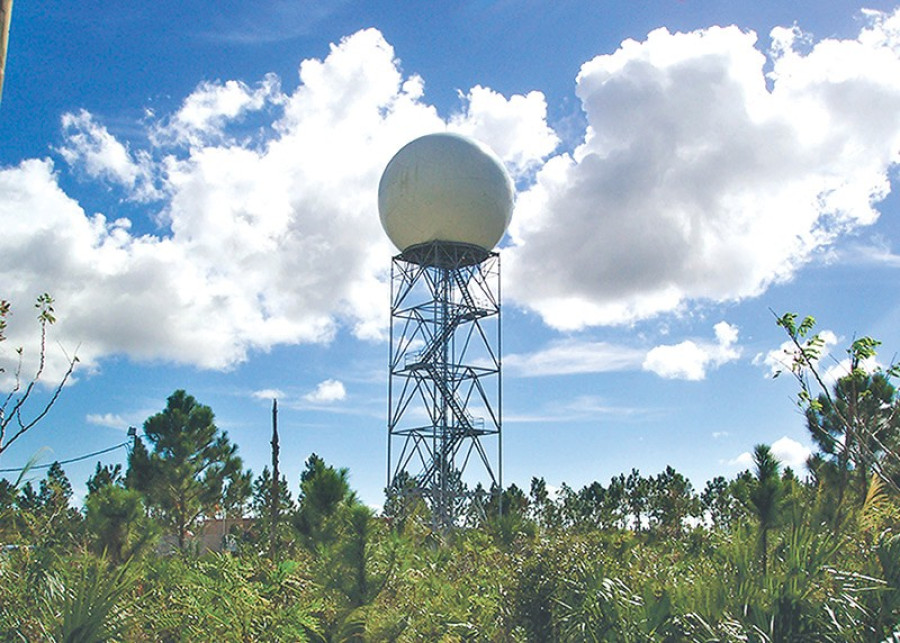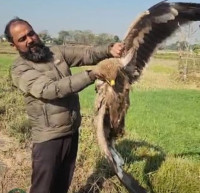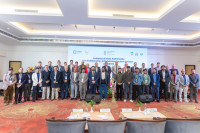National
After last month’s Tarai windstorm, weather forecast upgrade now on state’s priority list
Weather radar in Surkhet will come into operation next fiscal year while preparations are under way to install two more radars.
Chandan Kumar Mandal
After witnessing a massive rise on natural disasters last year, the government has prioritised the installation of weather radars in the country, in an effort to combat poor weather predictions and better prepare the country in the face of impending disasters.
The federal budget, presented in Parliament by Finance Minister Yubaraj Khatiwada on Wednesday, highlighted improving country’s weather and flood forecasting technology by installing modern and automatic equipment in a bid to minimise loss of lives and properties due to natural calamities.
The finance minister in his budget speech also said the weather radar installed in Surkhet will be brought into operation within the next fiscal year.
Installation of two other weather radars—in Udaypur and Palpa—has been given preference with budget allocation.
The government has allocated Rs590 millions for the installation of two weather radars in the two districts, the finance minister said.
The government’s urgency for weather radars by allocating budget for it has been the first such instance although there has always been some portion of budget for the purpose incorporated under a larger budget for the concerned body.
The move seems to have been prompted by a windstorm in April which had swept many villages in two districts of Province 2—Bara and Parsa—killing 28 people, injuring more than 400, and causing massive damage.
“Certainly, the strong windstorm that killed many people has prompted the government to allocate budget for the installation of weather radars,” said Rishi Ram Sharma, former director general with the Department of Hydrology and Meteorology.
“This is the first time the government talked about weather radars in its budget speech, which is the outcome of media reports that raised the issue of country not having the weather radars for better weather forecast,” he added.
The April windstorm had exposed the country’s poor weather forecast capacity and lack of preparedness. Government officials at the weather forecast authority had told the media, including the Post, that the approaching powerful storm in April could not be predicted because the country lacked weather radars.
Without such radars, the Meteorological Forecasting Division could only issue its regular bulletin mentioning overcast conditions and brief rainfall with thunderstorms in a few places.
The weather radar, also known as an automatic station, can scan the sky and feed data related to weather conditions. These radars can provide information that will be useful for aviation, disaster alert and agriculture.
“Once the weather radars will be in operation, our prediction will improve greatly. Weather forecast can be more reliable and provide real-time data on atmospheric weather conditions in the country,” said Sharma. “As the radar will enable NowCasting, providing real-time data on the movements of clouds and other atmospheric activities for the next few hours, the aviation sector and even the general public can plan their activities accordingly, avoiding any potential risks.”
The World Bank-supported weather radars installation project had begun in 2014. Installation of such a radar in Rata Nangala of Surkhet for covering the western region, with support of the World Bank under the Building Resilience to Climate-Related Hazards Disaster Project, has been completed.
Two other weather radars—in Ribdikot of Palpa in the central region and Rametar of Udayapur in the eastern region—will be funded by the government. Land acquisition and road and infrastructure construction for these weather radars have been completed. However, installation of these two radars is unlikely to be completed by the end of the next fiscal year.
“The department has already called tender for weather radars for Palpa and Udaypur. Even if the work begins now, it will take a minimum of 14 months,” Sharma told the Post. “The government’s stress on improving weather forecasting is praiseworthy.”




 11.12°C Kathmandu
11.12°C Kathmandu















